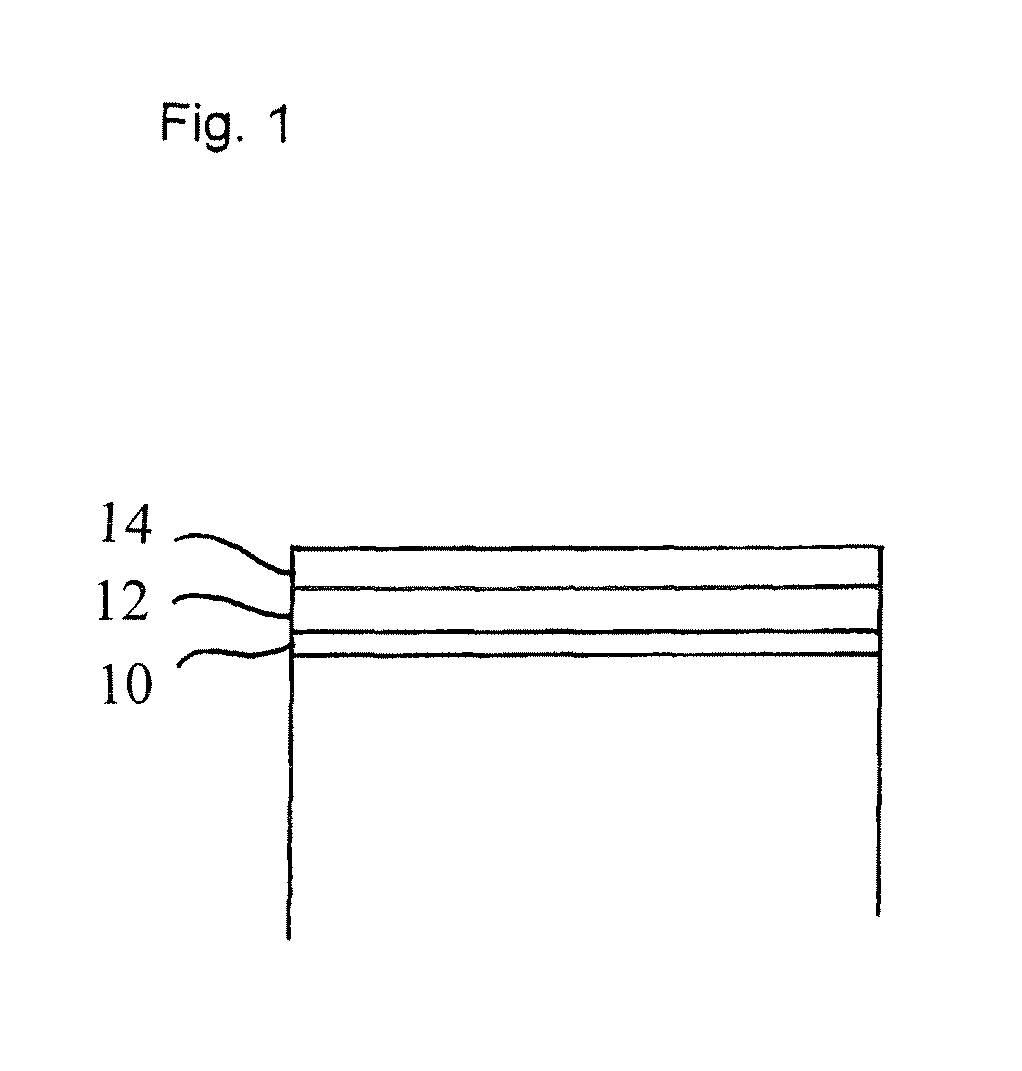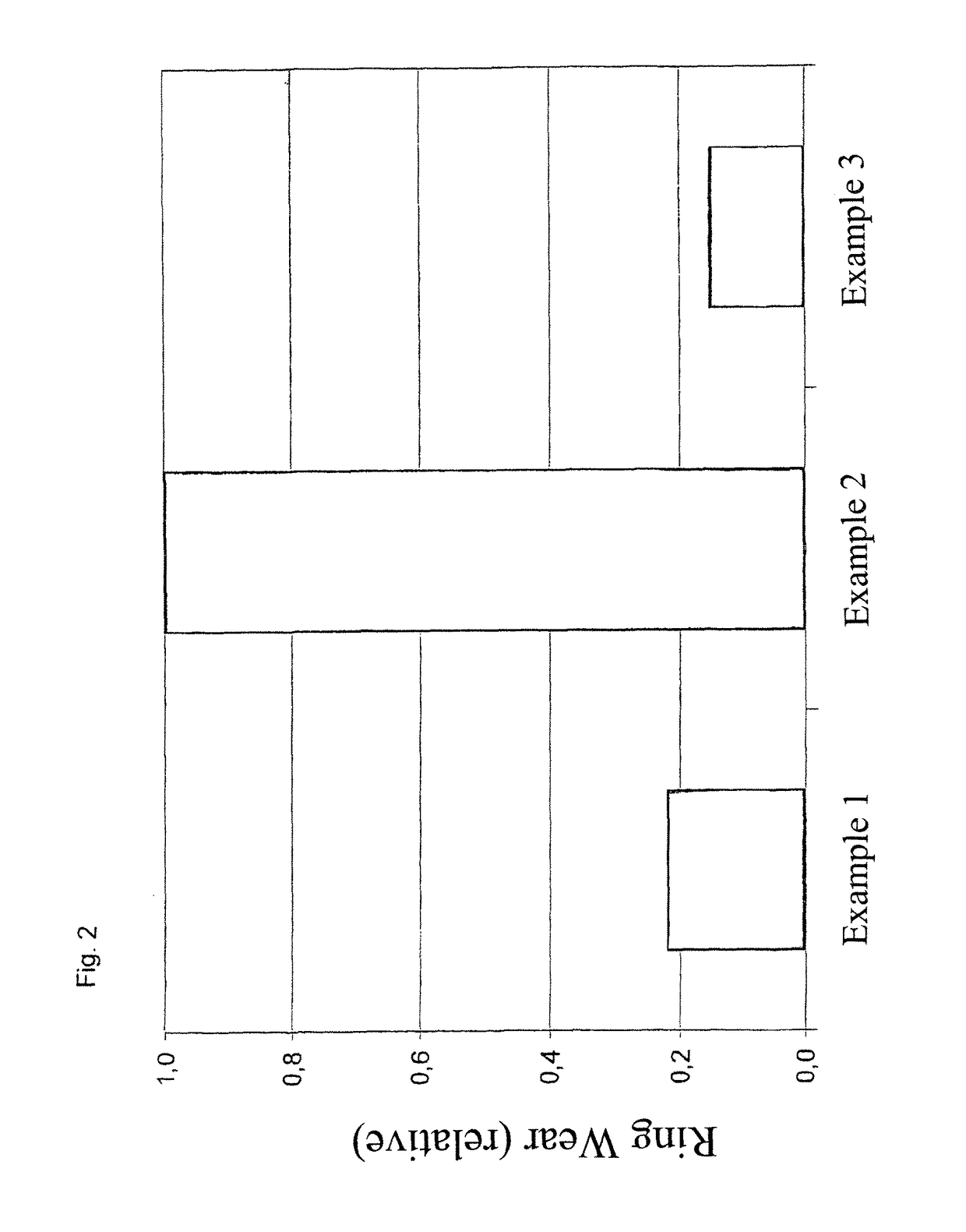Sliding element having a coating
a sliding element and coating technology, applied in the field of sliding elements, can solve the problems of premature wear of the dlc layer as a whole, too short service life of the sliding element, and worse wear values
- Summary
- Abstract
- Description
- Claims
- Application Information
AI Technical Summary
Benefits of technology
Problems solved by technology
Method used
Image
Examples
examples
[0027]The properties of the coating according to the invention were investigated on the basis of two examples and one comparative example. Tests were performed with the following coatings:
[0028]
Example123Ratio of middle layer / top layer0.712.401.08Proportion of top layer relative to0.420.710.52total layer
[0029]Examples 1 and 3 in this case are examples according to the invention, and Example 2 is a comparative example. The studies were performed for the system “piston ring / honed grey cast iron cylinder sleeve, lubricated”. FIG. 2 shows the relative wear values of the piston rings. As can be seen from FIG. 2, the examples according to the invention have a significantly lesser wear than the comparative example 2, in particular approximately only 20%, or less, of the wear occurring in the case of the comparative example 2.
[0030]As shown by FIG. 3, in the case of the examples according to the invention, moreover, the coefficient of friction is largely constant over time, whereas, in the ...
PUM
| Property | Measurement | Unit |
|---|---|---|
| thickness | aaaaa | aaaaa |
| thickness | aaaaa | aaaaa |
| thicknesses | aaaaa | aaaaa |
Abstract
Description
Claims
Application Information
 Login to View More
Login to View More - R&D
- Intellectual Property
- Life Sciences
- Materials
- Tech Scout
- Unparalleled Data Quality
- Higher Quality Content
- 60% Fewer Hallucinations
Browse by: Latest US Patents, China's latest patents, Technical Efficacy Thesaurus, Application Domain, Technology Topic, Popular Technical Reports.
© 2025 PatSnap. All rights reserved.Legal|Privacy policy|Modern Slavery Act Transparency Statement|Sitemap|About US| Contact US: help@patsnap.com



